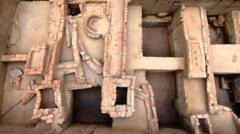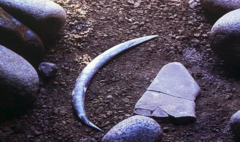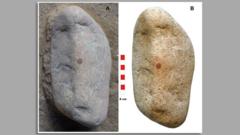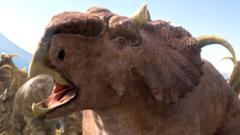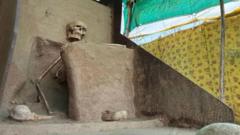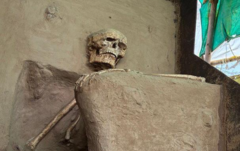Archaeologists have unveiled the tomb of Thutmose II, shedding light on the life and reign of a significant pharaoh, offering a rare glimpse into ancient Egyptian burial practices.
Pharaoh Thutmose II's Tomb Unearthed in Egypt: A Historic Archaeological Find

Pharaoh Thutmose II's Tomb Unearthed in Egypt: A Historic Archaeological Find
The recent discovery marks the first royal tomb excavation since King Tutankhamun's in 1922, revealing insights into Egypt's 18th Dynasty.
Archaeological teams have made a groundbreaking discovery in Egypt's Valley of the Kings, revealing the tomb of Thutmose II, marking an important milestone as this is the first royal tomb to be excavated since the famous find of King Tutankhamun in 1922. The announcement was made by Egypt's Ministry of Antiquities, highlighting the significance of the find amidst ongoing efforts to explore and preserve Egypt’s rich historical heritage.
The tomb, believed to date back to approximately 1480 B.C., was characterized as the "last missing royal tomb of the 18th Dynasty." The excavation project, which is a collaborative effort between Egyptian and British researchers, started in 2022. While initially thought to belong to a royal consort due to its proximity to significant female burials including that of Hatshepsut, further investigation indicated that it was indeed designed for a king, as evident from marked artifacts.
Among the artifacts found within the tomb were fragments of alabaster jars inscribed with the name of Thutmose II, unquestionably affirming it as his resting place. Inscriptions that referenced Hatshepsut were also present, linking her legacy intimately with that of her husband. Moreover, a well-preserved section of the ceiling revealed stunning blue paint adorned with yellow stars, a motif traditionally found only in royal tombs, underscoring the tomb's true purpose.
This discovery opens new avenues of understanding for historians and archaeologists studying Ancient Egypt. The careful excavation and analysis not only shine a light on the grandeur of Thutmose II's reign but also enrich the narrative of the ancient civilization's burial customs during a notably influential time in their history.
The tomb, believed to date back to approximately 1480 B.C., was characterized as the "last missing royal tomb of the 18th Dynasty." The excavation project, which is a collaborative effort between Egyptian and British researchers, started in 2022. While initially thought to belong to a royal consort due to its proximity to significant female burials including that of Hatshepsut, further investigation indicated that it was indeed designed for a king, as evident from marked artifacts.
Among the artifacts found within the tomb were fragments of alabaster jars inscribed with the name of Thutmose II, unquestionably affirming it as his resting place. Inscriptions that referenced Hatshepsut were also present, linking her legacy intimately with that of her husband. Moreover, a well-preserved section of the ceiling revealed stunning blue paint adorned with yellow stars, a motif traditionally found only in royal tombs, underscoring the tomb's true purpose.
This discovery opens new avenues of understanding for historians and archaeologists studying Ancient Egypt. The careful excavation and analysis not only shine a light on the grandeur of Thutmose II's reign but also enrich the narrative of the ancient civilization's burial customs during a notably influential time in their history.

